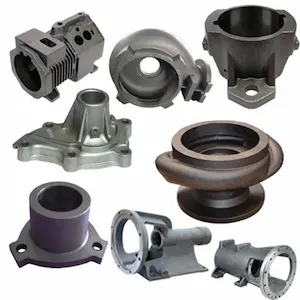Agricultural machinery castings, as an important part of agricultural machinery, play a vital role. They not only bear the weight and load of agricultural machinery, but also directly affect the performance, reliability and service life of agricultural machinery.
1. Importance of agricultural machinery castings
Agricultural machinery castings are widely used in various agricultural machinery such as tractors, harvesters, and seeders, such as engine cylinders, gearbox housings, bearings and other key components. The quality and performance of these components are directly related to the overall performance and operating efficiency of agricultural machinery. High-quality agricultural machinery castings can improve the reliability and durability of agricultural machinery, reduce failure rates and maintenance costs, and thus improve agricultural production efficiency.
2. Agricultural machinery castings Process
Includes sand casting, precision casting and die casting. Sand casting is one of the most widely used casting methods and is suitable for the production of castings of various shapes and sizes. Precision casting is suitable for the production of high-precision and high-surface quality castings, such as engine cylinder heads. Die casting is suitable for producing thin-walled and complex-shaped castings, such as gears and bearings.
During the process, factors such as the selection of raw materials, smelting process, pouring temperature, and mold design will affect the quality and performance of castings. Therefore, the manufacturing process parameters must be strictly controlled to ensure that the quality of castings meets the requirements.
3. Defects and solutions
Porosity
Reason: The gas is not discharged in time during pouring, or the water content of the molding sand is too high.
Slag inclusion
Reason: The slag is not completely removed during the pouring process and enters the casting.
Solution:
Strengthen the slag removal operation during the smelting process.
Use a filter or ceramic filter to intercept the slag.
Optimize the pouring system to reduce the entry of slag.
Speed up the pouring speed to avoid premature cooling of the molten metal.
Optimize the pouring system to ensure uniform filling of the molten metal.
3.7. Deformation
Cause: Uneven cooling of the casting or unreasonable mold design leads to shape changes.
Solution:
Improve the quality of the molding sand to ensure a smooth surface.
Control the pouring temperature to avoid it being too high.
Clean and maintain the mold regularly to ensure a smooth surface.
In short, as an important part of agricultural machinery, the quality and performance of agricultural machinery castings are directly related to the overall performance and operating efficiency of agricultural machinery. Therefore, it is necessary to strictly control the manufacturing process parameters, strengthen quality control, and ensure that the quality of the castings meets the requirements. At the same time, effective solutions should be adopted to address the defects that may occur in the casting production process, improve the performance and reliability of castings, and provide solid support for the development of modern agriculture.






